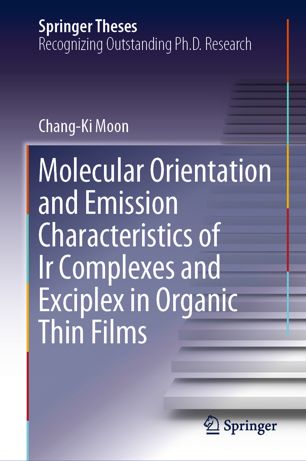

Most ebook files are in PDF format, so you can easily read them using various software such as Foxit Reader or directly on the Google Chrome browser.
Some ebook files are released by publishers in other formats such as .awz, .mobi, .epub, .fb2, etc. You may need to install specific software to read these formats on mobile/PC, such as Calibre.
Please read the tutorial at this link: https://ebookbell.com/faq
We offer FREE conversion to the popular formats you request; however, this may take some time. Therefore, right after payment, please email us, and we will try to provide the service as quickly as possible.
For some exceptional file formats or broken links (if any), please refrain from opening any disputes. Instead, email us first, and we will try to assist within a maximum of 6 hours.
EbookBell Team

5.0
38 reviewsThis thesis considers molecular orientation in thin films and introduces an optical model describing this orientation as applied to organic light-emitting diodes (OLEDs). It also describes the electronic structure of intermolecular charge transfer excitons correlated to molecular orientation in solids.
It has long been known that molecular orientation influences the electrical and optical properties of molecular films. One notable example is in liquid crystals where rigid rod or disk shaped molecules are commonly used. Understanding the origin of the molecular orientation and its control by surface treatment and electric field resulted in the development of liquid crystal displays. The same thing has happened in organic electronics, and considerable effort has been devoted to understanding and controlling molecular orientation in solid films to improve charge carrier mobility and light absorption, ultimately to improve the performance of organic solar cells and thin film transistors.
In contrast, less attention has been paid to molecular orientation and its influence on the characteristics of OLEDs, probably because of the use of amorphous films rather than micro-crystalline films, and it is only in recent years that some molecular films are known to have preferred orientation. This thesis addresses this topic, focusing on OLEDs, describing the origin and control of the orientation of phosphorescent Ir complexes possessing spherical shape rather than rod or disk shape, the simulation of the optical characteristics of OLEDs influenced by preferred molecular orientation, and finally the orientation of intermolecular charge transfer excitons and its correlation to electronic structures in thin films.